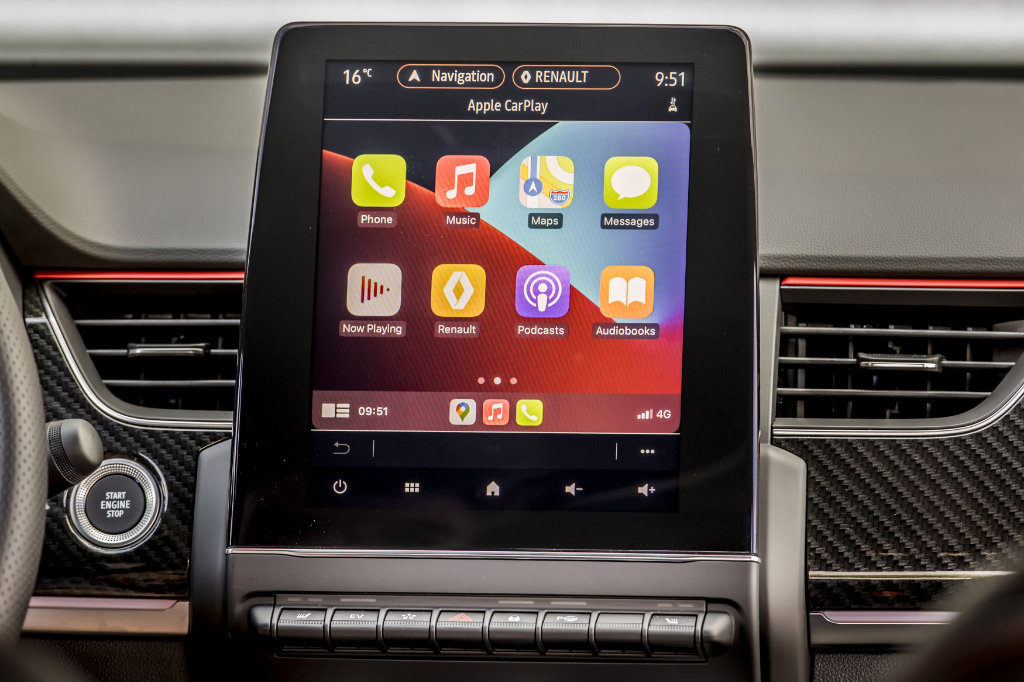
Renault Arkana

A scant handful of automotive marques are readily identifiable by one, possibly two, styling signatures that have, over time, become embedded in their design DNA.
Aston Martin, for instance, has both the famous David Brown front grille shape (though recent efforts have somewhat eroded the elegance of the original form) and the straked engine bay vent behind the front wheel arch (though recent efforts etc. And the hideous go-faster gash visited upon the latest Vantage is frankly, just ghastly).
BMW too relies heavily on its kidney grille -now uncomfortably swollen to something more redolent of a lung- for instant identification; the more subtle Hofmeister kink at the rear of the side glazing still ever present but increasingly unheralded. And the front of an Audi (and a Lexus for that matter) is, of course, simply all grille.

Then we have the hot-blooded likes of Ferrari, Lamborghini, Maserati and Alfa Romeo, the badges alone of which bring with them a considerable heft of kudos -though in the case of the latter the rot set in with the ugly little Mito and, ever since, Alfa has stolidly set about reinforcing the fact that it doesn’t matter how fine your badge is if the car itself exudes all the styling panache of a bucket of smashed crabs…
And that, with the odd exception such as Mazda quietly carving itself handsome, range-identifying styling and the occasional Peugeot daytime running light fang, leaves the rest of today’s automotive design pie chart littered with cars the identity of which would remain a total mystery but for the wok-sized badge baying for your attention from the front of the bonnet.

Much like this Arkana. I’m somewhat baffled by several of my colleagues’ pronouncements that this Captur-based, coupe-esque SUV is a good looking thing, because it strikes me as little more than a collection of typically amorphous, gently blobby small-but-tall car styling cues and a more acutely angled rear window huddled for cohesion round a vast badge.
Alas, Renault is by no means alone in this current approach to family car styling… Wouldn’t it be great if, for a change, design took priority over branding; if someone made a car which made you think ‘Wow, that looks terrific, I wonder who makes it.’? Surely the fact that a car is not expensive is no excuse for it being unattractive.

On board, the Arkana betrays its Captur heritage with an extremely similar cabin which apparently must do without some of the latter’s finer features; glossy plastic instead of soft-touch dashboard finishes, and no floating console despite the lack of requirement in this hybrid automatic for a gear linkage. Whilst we’re on the subject of what’s missing, the gear selector’s PRNDB icons aren’t backlit after dark, there’s no wiper on the rear screen, and perceived quality feels a tad lower than that of the smaller, less expensive Captur.
On the plus side, that cabin is comfortable and spacious enough, and functional to boot, with proper switches and dials for the climate control and a 9.3-inch touch-screen infotainment system that won’t drive your crackers. I’d not go as far as to call the whole stylish, but at least that makes it a good match for the car’s couture.

Under the bonnet is a full hybrid version of Renault’s latest electrified powertrain. This combines a 1.6 litre petrol engine with one small and one large electric motor (the latter acting as a starter-generator), and a six-speed unsynchronised gearbox without a conventional clutch.
Total system power output is 142 bhp, the petrol engine producing 109 lb ft of torque and the electric motor 184 lb ft. Resultant 0-6 2 mph acceleration of a somewhat sluggardly 10.8 seconds hardly does the Arkana’s fastback justice, and maximum speed just 107 mph.
The transmission is… well, unusual. With the engine put into neutral to be decoupled from the rest of the powertrain, the car always sets off under electric power alone. To make gearchanges possible, the gearbox has dog clutches instead of synchromesh, and the electric starter-generator can speed up, slow down and otherwise align the crankshaft in order to match revs and smooth gear engagement.
We must assume that Renault has adopted this gently baffling approach to gear changing in order to avoid the freshly-branded calf bellowing associated (despite endless efforts) with CVT transmissions a la Toyota. Sadly, things haven’t quite worked out that way…

Pottering in EV mode feels as quiet and refined as you’d expect of electric motor power. But when you put your foot down the revs rise, and rise, and rise until all you’re left with is the roar of the engine, not much accompanying acceleration, and -in the absence of flappy paddles- no way of insisting the car change gear until it’s good and over-ready. And in that respect it sound alarmingly like, oh dear, a CVT.
Drive the Arkana gently enough to belie that coupe styling, however, and the transmission will pipe down, making it all the more easy to hear the wind and tyre roar fill the interior as speeds rise.

The suspension also baffles; soft springing should make for the comfortable straight line ride to be applauded in a family car, yet the Arkana fidgets constantly like the incontinent child with his hand up at the back of the class, and can be unpleasantly crashy on poorer road surfaces. Moreover, attempts to make proper progress down your favourite B road are met with considerable roll and a lack of body control that, allied to the episode of Bonanza being filmed under the bonnet, will soon have you backing off.
Filling a niche that didn’t know it need filling, then, the Arkana pretty much fits the bill on price and accommodation, but lacks finesse in too many other areas to make a particularly appealing proposition.